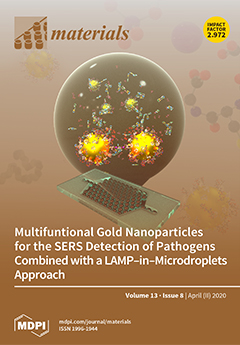For digital impression-making of two-piece oral implants, scan bodies are used to transfer the exact intraoral implant position to the dental laboratory. In this in vitro investigation, the accuracy of digitizing a one-piece ceramic oral implant without a scan body (OC) was compared
[...] Read more.
For digital impression-making of two-piece oral implants, scan bodies are used to transfer the exact intraoral implant position to the dental laboratory. In this in vitro investigation, the accuracy of digitizing a one-piece ceramic oral implant without a scan body (OC) was compared to that of a standard two-piece titanium implant with a scan body (TT) and a preparation of a natural single tooth (ST). Furthermore, incomplete scans of OC simulating clinical compromising situations (OC
1–4) were redesigned using a virtual reconstruction tool (RT) and superimposed to OC. OC and TT oral implants and one ST were inserted into a mandible typodont model and digitized (
N = 13) using two different intraoral scanners. The resulting virtual datasets were superimposed onto a three-dimensional (3D) laser scanner-based reference. Test and reference groups were aligned using an inspection software according to a best-fit algorithm, and circumferential as well as marginal discrepancies were measured. For the statistical evaluation, multivariate analyses of variance with post-hoc Tukey tests and students
t-tests to compare both scanners were performed. A total of 182 datasets were analyzed. For circumferential deviations, no significant differences were found between ST, TT, and OC (
p > 0.964), but increased deviations for OC
1–4 (
p < 0.001) were observed. The measurements of the marginal deviations revealed that ST had the smallest deviations, and that there were no significant differences between TT, OC, and OC
1–4 (
p > 0.979). Except for marginal deviation of OC (
p < 0.001), the outcome was not affected by the scanner. Within the limitations of this study, digitization of OC is as accurate as that of TT, but less than that of ST. In the case of known geometries, post-processing of compromised scans with a virtual reconstruction results in accurate data.
Full article






